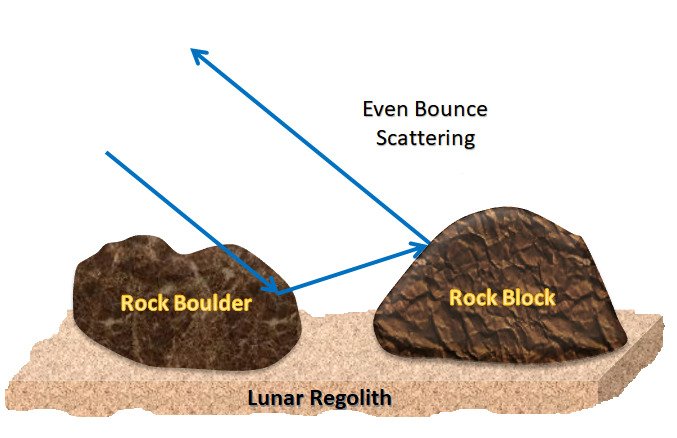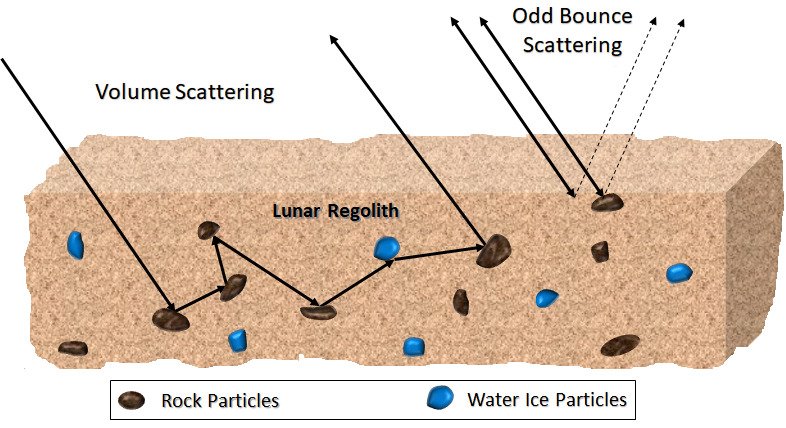Delhi: ISRO releases pics of Moon's impact craters taken by Chandrayaan-2
Delhi - ISRO releases pics of Moon's impact craters taken by Chandrayaan-2
Moon has been continuously bombarded by meteorites, asteroids and comets since its formation. This has resulted in the formation of innumerable impact craters that form the most distinct geographic features on its surface. Impact craters are approximately circular depressions on the surface of the moon, ranging from small, simple, bowl-shaped depressions to large, complex, multi-ringed impact basins. In contrast to volcanic craters, which result from explosion or internal collapse, impact craters typically have raised rims and floors that are lower in elevation than the surrounding terrain. The study of the nature, size, distribution and composition of impact craters and associated ejecta features reveal valuable information about the origin and evolution of craters. Weathering processes result in many of the crater physical features and ejecta material get covered by layers of regolith, making some of them undetectable using optical cameras. Synthetic Aperture Radar (SAR) is a powerful remote sensing instrument for studying planetary surfaces and subsurface due to the ability of the radar signal to penetrate the surface. It is also sensitive to the roughness, structure and composition of the surface material and the buried terrain. Previous lunar-orbiting SAR systems such as the S-band hybrid-polarimetric SAR on ISRO’s Chandrayaan-1 and the S & X-band hybrid-polarimetric SAR on NASA’s LRO, provided valuable data on the scattering characterisation of ejecta materials of lunar impact craters. However, L & S band SAR on Chandraayan-2 is designed to produce greater details about the morphology and ejecta materials of impact craters due to its ability of imaging with higher resolution (2 - 75m slant range) and full-polarimetric modes in standalone as well as joint modes in S and L-band with wide range of incidence angle coverage (9.5° - 35°). In addition, the greater depth of penetration of L-band (3-5 meters) enables probing the buried terrain at greater depths. The L & S band SAR payload helps in unambiguously identifying and quantitatively estimating the lunar polar water-ice in permanently shadowed regions.
Previous lunar-orbiting SAR systems such as the S-band hybrid-polarimetric SAR on ISRO’s Chandrayaan-1 and the S & X-band hybrid-polarimetric SAR on NASA’s LRO, provided valuable data on the scattering characterisation of ejecta materials of lunar impact craters. However, L & S band SAR on Chandraayan-2 is designed to produce greater details about the morphology and ejecta materials of impact craters due to its ability of imaging with higher resolution (2 - 75m slant range) and full-polarimetric modes in standalone as well as joint modes in S and L-band with wide range of incidence angle coverage (9.5° - 35°). In addition, the greater depth of penetration of L-band (3-5 meters) enables probing the buried terrain at greater depths. The L & S band SAR payload helps in unambiguously identifying and quantitatively estimating the lunar polar water-ice in permanently shadowed regions.
A convenient approach towards discerning the radar information is to prepare images using two derived parameters, ‘m’ the degree of polarization and ‘δ’ the relative phase between the transmit-receive polarized signals. These parameters are used to generate colour composite images with ‘even-bounce’, ‘volume or diffused’ and ‘odd-bounce’ scatterings of a pixel represented in red (R), green(G), and blue (B) image planes, respectively. The genesis of the scattering mechanism is as illustrated in Figure 1.Figure 2 is one of the m- δ decomposition images from the first datasets acquired over lunar south polar regions in L-band high-resolution (2mslant-range resolution) hybrid polarimetric mode. It is important to note that the obtained resolution is one-order better than the earlier best by a lunar-radar. This image presents many interesting facts about the secondary craters of different ages and origins in the lunar south polar region. The yellowish tone around crater rims in the image shows ejecta fields. The distribution of ejecta fields, whether uniformly distributed in all directions or oriented towards a particular side of a crater, indicates the nature of the impact. The image shows craters of vertical impact and oblique impact on the top-right and bottom-right, respectively. Similarly, the roughness of the ejecta materials associated with the impact craters indicates the degree of weathering a crater has undergone. Three similar sized craters along a row on the bottom-right of the image show examples of young crater, moderately weathered crater and an old degraded crater. Many of the ejecta fields seen in the image are not visible in high-resolution optical image over the same region, indicating the ejecta fields are buried beneath regolith layers.Chandrayaan-2 Orbiter’s DF-SAR has been operated in full-polarimetry mode- a gold standard in SAR polarimetry, and is the first-ever by any planetary SAR instrument. Figure 3 shows an L-band fully-polarimetric, 20m slant-range resolution image of Pitiscus-T crater. The image is a colour composite of different transmit-receive polarization responses of the imaged region.
 Previous lunar-orbiting SAR systems such as the S-band hybrid-polarimetric SAR on ISRO’s Chandrayaan-1 and the S & X-band hybrid-polarimetric SAR on NASA’s LRO, provided valuable data on the scattering characterisation of ejecta materials of lunar impact craters. However, L & S band SAR on Chandraayan-2 is designed to produce greater details about the morphology and ejecta materials of impact craters due to its ability of imaging with higher resolution (2 - 75m slant range) and full-polarimetric modes in standalone as well as joint modes in S and L-band with wide range of incidence angle coverage (9.5° - 35°). In addition, the greater depth of penetration of L-band (3-5 meters) enables probing the buried terrain at greater depths. The L & S band SAR payload helps in unambiguously identifying and quantitatively estimating the lunar polar water-ice in permanently shadowed regions.
Previous lunar-orbiting SAR systems such as the S-band hybrid-polarimetric SAR on ISRO’s Chandrayaan-1 and the S & X-band hybrid-polarimetric SAR on NASA’s LRO, provided valuable data on the scattering characterisation of ejecta materials of lunar impact craters. However, L & S band SAR on Chandraayan-2 is designed to produce greater details about the morphology and ejecta materials of impact craters due to its ability of imaging with higher resolution (2 - 75m slant range) and full-polarimetric modes in standalone as well as joint modes in S and L-band with wide range of incidence angle coverage (9.5° - 35°). In addition, the greater depth of penetration of L-band (3-5 meters) enables probing the buried terrain at greater depths. The L & S band SAR payload helps in unambiguously identifying and quantitatively estimating the lunar polar water-ice in permanently shadowed regions.
A convenient approach towards discerning the radar information is to prepare images using two derived parameters, ‘m’ the degree of polarization and ‘δ’ the relative phase between the transmit-receive polarized signals. These parameters are used to generate colour composite images with ‘even-bounce’, ‘volume or diffused’ and ‘odd-bounce’ scatterings of a pixel represented in red (R), green(G), and blue (B) image planes, respectively. The genesis of the scattering mechanism is as illustrated in Figure 1.Figure 2 is one of the m- δ decomposition images from the first datasets acquired over lunar south polar regions in L-band high-resolution (2mslant-range resolution) hybrid polarimetric mode. It is important to note that the obtained resolution is one-order better than the earlier best by a lunar-radar. This image presents many interesting facts about the secondary craters of different ages and origins in the lunar south polar region. The yellowish tone around crater rims in the image shows ejecta fields. The distribution of ejecta fields, whether uniformly distributed in all directions or oriented towards a particular side of a crater, indicates the nature of the impact. The image shows craters of vertical impact and oblique impact on the top-right and bottom-right, respectively. Similarly, the roughness of the ejecta materials associated with the impact craters indicates the degree of weathering a crater has undergone. Three similar sized craters along a row on the bottom-right of the image show examples of young crater, moderately weathered crater and an old degraded crater. Many of the ejecta fields seen in the image are not visible in high-resolution optical image over the same region, indicating the ejecta fields are buried beneath regolith layers.Chandrayaan-2 Orbiter’s DF-SAR has been operated in full-polarimetry mode- a gold standard in SAR polarimetry, and is the first-ever by any planetary SAR instrument. Figure 3 shows an L-band fully-polarimetric, 20m slant-range resolution image of Pitiscus-T crater. The image is a colour composite of different transmit-receive polarization responses of the imaged region.
